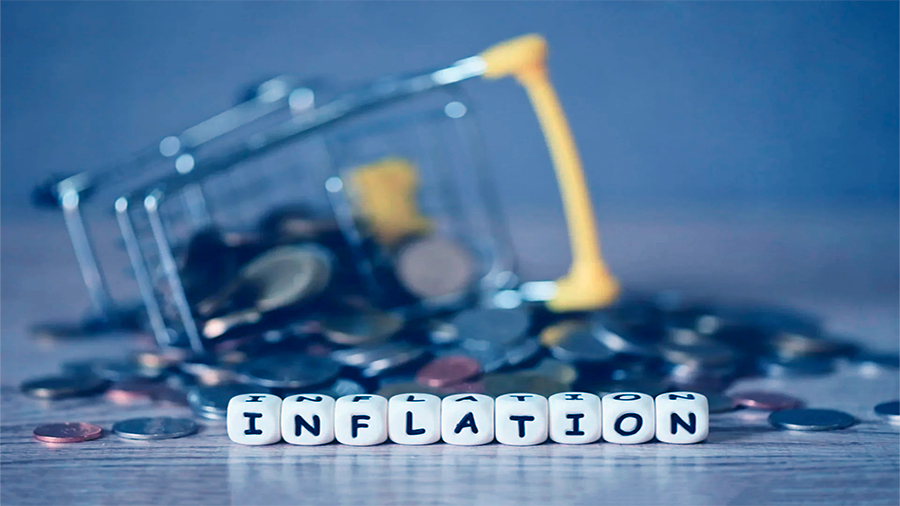From Shelves To Wallets: How Disappearance Drives Inflation Perception
How The Disappearance Of Familiar Products Leads To Increased Spending
When people talk about inflation, they usually focus on numbers: how much prices went up in a month or what the yearly rate looks like. But inflation is not just a set of statistics—it is also an experience. One of the most overlooked aspects is expectation inflation, the feeling that prices are rising faster than official data shows. This perception often grows when familiar products disappear or change. When shelves no longer carry the goods people trust, or when replacements cost more, the sense of spending pressure increases. Even if the numbers don’t confirm it, households feel poorer.
Why Familiar Products Shape Our Perception Of Prices
For most households, budgeting is not done by tracking every category of spending but by comparing familiar products over time. A specific bread brand, a favorite coffee, or a go-to cleaning product becomes a personal benchmark for stability. When that product disappears, is reformulated, or shrinks in size, the consumer loses a reference point. Any substitute feels more expensive—even if the difference is small—because it disrupts expectations. Familiar goods act as anchors, making the cost of living feel predictable. Once they vanish, people experience uncertainty, and the same paycheck suddenly seems to cover less. This explains why official inflation data may show modest growth, while public opinion insists inflation is higher: the disappearance of trusted products alters how people measure value.
The Anchor Effect
Psychologists call this the anchor effect—our minds fixate on a known reference point. When that anchor is pulled away, every replacement feels costlier, even when price differences are marginal.
Expectation Inflation: The Gap Between Statistics And Reality
Expectation inflation emerges when people believe their expenses grow faster than the official inflation rate suggests. Statistics might say inflation is 4 percent, but individuals feel it is 10 percent. Why? Because they base their perception on visible changes in everyday products. If their favorite cereal box is smaller, or the coffee brand disappears and the alternative costs more, they register this as inflation. In contrast, statistics spread price changes across a wide basket of goods and services, including items people may rarely buy. This creates a gap between measured inflation and lived experience. The emotional weight of losing familiar items makes price increases feel sharper and more unfair than numbers alone can explain.
Substitution Problems
Economists assume consumers can substitute one product for another when prices rise. But in reality, switching comes with emotional and financial costs that make inflation feel worse than models predict.

Hidden Costs Of Disappearing Products
When a familiar product disappears, people don’t just pay more in money—they pay in time, energy, and emotional frustration. Searching for alternatives requires effort. Testing replacements can lead to disappointment. Households often buy multiple substitutes before finding something acceptable, which inflates spending beyond the direct price increase. These hidden costs rarely show up in statistics but weigh heavily on consumers. For low-income families, where every dollar counts, the disappearance of familiar products is not just inconvenient—it creates real financial strain that official measures underestimate.
The Search Penalty
Each trip to a store without finding what you expect adds a psychological cost. That “search penalty” contributes to the feeling that inflation is higher than it officially is.
The Psychological Side Of Spending
Inflation is as much about perception as reality. When people feel forced to spend more, they react by cutting back in other areas or becoming more anxious about finances. This anxiety can alter behavior, leading to bulk buying when goods are available, or overspending on substitutes out of fear of future shortages. The disappearance of familiar products feeds this cycle. Even when overall inflation slows, expectation inflation keeps households cautious and worried. This behavior can even influence markets: when demand shifts suddenly due to consumer anxiety, it creates price pressures that feed back into real inflation.
Confidence And Control
Having access to familiar goods creates a sense of stability. Losing them reduces confidence in the system and in personal financial control, magnifying the inflation experience.
Examples From Daily Life
Consider a family that buys the same breakfast cereal every week. If the box suddenly shrinks by 15 percent while the price stays the same, the family perceives a jump in costs. Official statistics may adjust for package sizes, but to the family, the budget stretches less. Or take a commuter who relies on a specific public transport pass. If the pass is discontinued and replaced by a more expensive digital option, the extra cost feels like inflation even if service quality improves. Across thousands of households, these small disruptions accumulate, shaping a widespread belief that inflation is higher than reported.
Everyday Anchors
Groceries, utilities, and subscriptions are the most visible anchors of cost. When they change suddenly, people feel inflation in their daily routines, not just in abstract numbers.
How Businesses Influence Expectation Inflation
Companies sometimes withdraw familiar products to cut costs, rebrand, or adjust to supply shortages. While financially rational for firms, this behavior fuels expectation inflation for consumers. Shrinkflation—reducing product size without lowering price—is a common tactic. Product reformulation, like lowering quality ingredients, also feeds perception. Even replacing a mid-market product with a premium option can make people feel forced to spend more. Businesses are not directly raising prices in all cases, but the result for consumers is the same: higher perceived spending and a stronger sense of inflationary pressure.
Brand Loyalty And Trust
When loyal customers feel abandoned by disappearing products, they often view the brand as less trustworthy. This eroded trust further amplifies the perception of unfair price increases.

Policy Challenges In Measuring True Inflation
For policymakers, expectation inflation creates a serious challenge. If statistics suggest moderate inflation but public opinion insists prices are spiraling, trust in institutions erodes. Traditional inflation indexes can’t capture the full impact of disappearing products, shrinkflation, or substitution effects. Some countries have started experimenting with consumer perception surveys, but the gap remains wide. Without better tools to measure the lived reality of inflation, policy responses risk feeling out of touch. This disconnect contributes to frustration, protests, and political pressure for stronger interventions, even when the numbers don’t justify them.
The Need For Better Data
Future inflation measures may need to integrate consumer perception more directly, capturing the hidden costs and psychological impacts of disappearing products.
The Long-Term Consequences
Over time, expectation inflation reshapes economic behavior. Households may become more risk-averse, holding larger savings buffers instead of spending. Businesses may face demand shifts as consumers boycott brands perceived to play “tricks” with pricing. Governments may struggle to convince citizens that inflation is under control when daily experiences say otherwise. The disappearance of familiar products, while subtle, is central to this dynamic. It reminds us that inflation is not just about averages but about the emotional reality of how people experience prices in their lives.
A Cycle Of Distrust
Once expectation inflation takes hold, it can take years for confidence to rebuild, even after actual inflation rates stabilize.
The Conclusion
The disappearance of familiar products highlights the hidden layer of inflation that statistics often miss. Expectation inflation is about perception shaped by daily experiences. When favorite goods vanish, shrink, or are replaced, households feel forced to spend more—even if official data says otherwise. This gap between numbers and reality drives anxiety, alters spending behavior, and fuels distrust in institutions. Inflation, therefore, must be understood not only as a measurable phenomenon but also as a lived one. To truly address price stability, businesses and policymakers must recognize that familiar products anchor consumer trust, and when those anchors disappear, so does the sense of financial control.


